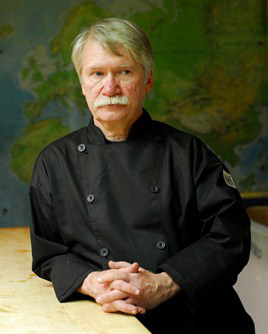Think Tank: Partners in Education
07 October 2014
 Integration of industry and education better prepares students for success and makes a school essential in the eyes of all stakeholders. Good news is that opportunities for your program to partner with your local business community are endless.
Integration of industry and education better prepares students for success and makes a school essential in the eyes of all stakeholders. Good news is that opportunities for your program to partner with your local business community are endless.
By Paul Sorgule, MS, AAC
Sometimes programs tend to underestimate the breadth of resources and educational talent at their disposal. We look to our full- and part-time faculty as the primary resource and strength of a program, as one would assume.
However, those program administrators who see the potential to draw the hospitality community into the folds of their faculty resources can build a truly dynamic curriculum to rival the largest and finest colleges. Creating a stage for Partners in Education allows business leaders to understand how they might assist in building extraordinary opportunities for young people aspiring to a career in hospitality.
We all understand how this might occur through internships and externships, giving students the ability to apply the hands-on skills they are developing in a campus program, but few programs understand that this “partnership” can extend to all academic courses, as well. Hands-on can apply to every part of your curriculum. Considering that most students enrolled in culinary programs are tactile learners, this application approach can result in a more-engaged student, enhanced relationships with outside stakeholders in your program, and a truly balanced graduate.
Students, parents and accrediting agencies are collectively holding college administrators and faculty members to a different standard. Everyone seems to want measureable, and visible, outcomes that make a difference in a student’s professional life. Stakeholders are looking for value.
How many students in your experience have verbalized their indifference to courses that involve math, writing, accounting, science, social science and the humanities? Students jump at the chance to be active in their cooking classes, but tend to go through the motions with those courses that they consider ancillary and less significant to their future. As seasoned educators we realize the importance of the content of these courses, but have rarely contemplated how to build a level of excitement around them, demonstrating clearly their relevance and importance to a student’s future success.
A Partners in Education approach can make these other courses come alive. The significance of math, writing, communication, language, psychology, history and art will, at times, outweigh the importance of those technical cooking skills that students tend to cherish. As chefs, managers and entrepreneurs, success will be driven by a graduate’s understanding of the world around him or her and those core skills that will allow each to operate a successful business, manage people and engage customers.
So, what does a Partners in Education model look like, how can and should it be managed, how should it be effectively integrated into a curriculum, and who should hold the responsibility for monitoring its implementation and success? Let’s take a look at a few examples:
- Harvard Business School established the Case Study Model for use in its MBA program as a cornerstone to its method of teaching and student engagement.
- This same model, without the depth of investigation, can be used at the associate and baccalaureate level integrating established hospitality cases (available from a variety of sources) or partnering with local restaurants and hotels, allowing students to build a customized case through partnered observation. Through team building, students could present their case and solution scenarios to the management or ownership of the business. Confidentiality would, of course, be required.
- Students in your marketing classes might provide “boots on the ground” blitz marketing for a local business in conjunction with its sales force.
- An information-technology class team could be assigned to analyze a restaurant’s social-media campaign and propose modifications based on its findings.
- A media class might get involved in plate design and photo shoot of menu items for a restaurant’s web page and blog.
- Your program’s nutrition class could work with area restaurants to complete a nutrition analysis for their menus with focus on calories, fat, sodium, etc.
- An advanced kitchen class could work with a small multiunit operator in the development of a new dish for its menus. Ingredient work-up, production testing, recipe development, tasting panels, etc. could play into this exercise.
- Entrepreneur interviews for communications classes, shadowing area chefs and owners to determine the complexity of their positions, and blind critiques of a restaurant experience would benefit students, your program and the entrepreneur.
The list could go on and on. The opportunities to partner with the business community are endless and the benefits for all involved are obvious. Your program, no matter the size, can add incredible breadth to a curriculum and set the degree apart from others. Most importantly, integration of industry and education helps to better prepare students for success and make your school essential in the eyes of all stakeholders. The answer to who is responsible for this integration is simple: Administrators and faculty would need to make this a priority.
Hands on, real-life programs can and should include language, art, history, sociology, math, writing and the sciences. This is the foundation of educational value.
PLAN BETTER—TRAIN HARDER.
Paul Sorgule, MS, AAC, president of Harvest America Ventures, a “mobile restaurant incubator” based in Saranac Lake, N.Y., is the former vice president of New England Culinary Institute and a former dean at Paul Smith’s College. Contact him at This email address is being protected from spambots. You need JavaScript enabled to view it., www.harvestamericaventures.com.
Additional Info
- CAFÉ Talks Podcast Lesson Plan: 11
